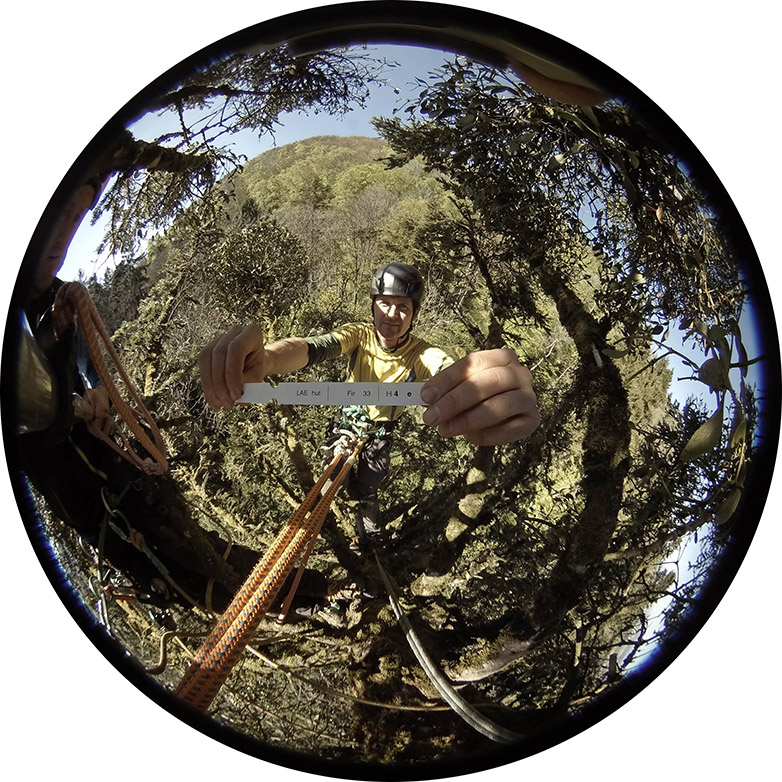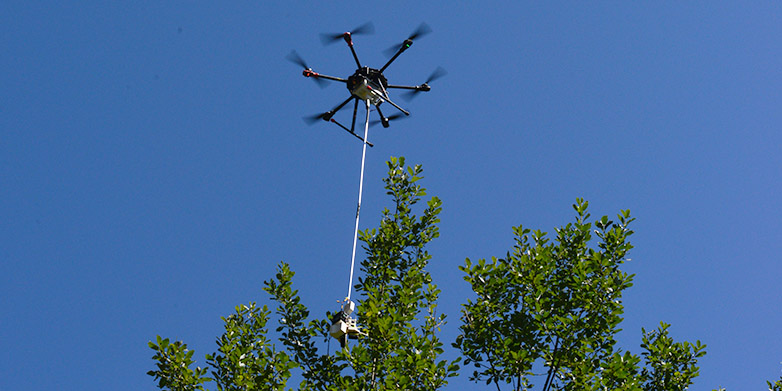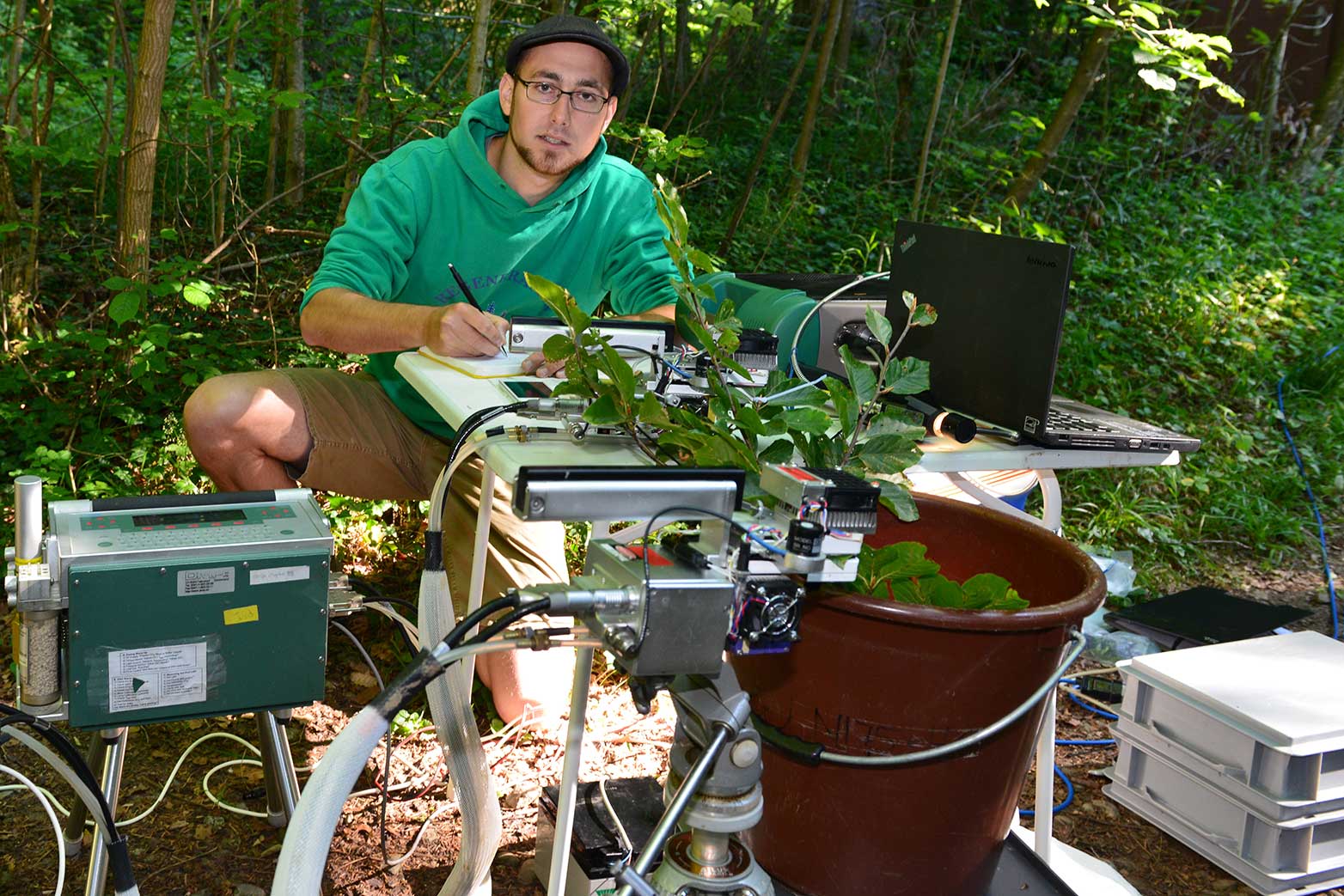Into the forests!
This summer, environmental scientists were studying individual leaves to understand how trees balance their use of light, water and nutrients, and how this affects the CO2 uptake of entire forests.
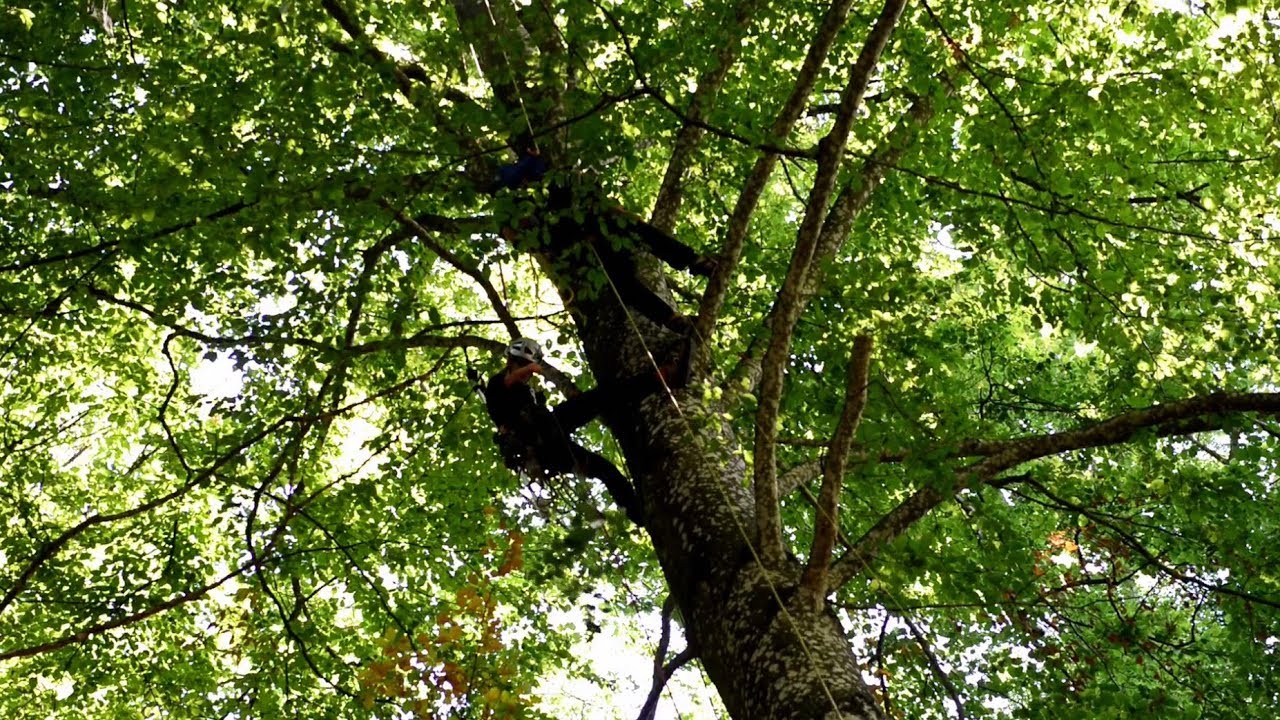
Assistant Eva Merz is standing at the foot of a mighty beech tree in the middle of the forest. Two climbing ropes hang down from the crown of the tree. Two well-secured tree-climbers, Markus Gysin and Anja Erni, navigate their way through the branches at dizzying heights, cut off a branch and then carefully lower it to the ground by means of a thin cord. Merz grabs the branch and removes it from the cord. “I’m off again,” she calls up before hurrying back to the “base camp” with the harvested material.
The base camp is located on a path in a forest on the southern slope of the Lägeren, east of Wettingen. The measuring instruments are set up here: some on a small camping table, larger ones on the ground. Merz, the exchange student Aldara Sabuz Millàn and postdoc Christoph Bachofen – all from ETH professor Nina Buchmann’s group – immediately start measuring the leaves from the cut branch. They use a fluorescence spectrometer to measure the amount of chlorophyll, a leaf porometer to measure the amount of water evaporation through the leaf’s stomata, and an infrared gas meter to measure how much CO2 the leaf absorbs through photosynthesis under various light conditions.
All this has to be done quickly, as within minutes of cutting the branch, the leaves react to the lack of water and other environmental changes: they close their stomata to evaporate less water, degrade chlorophyll and reduce photosynthesis.
Leaves from the whole forest canopy
But why all these instruments and analyses? Bachofen and his colleagues are working on a two-year project called Leaf2Canopy that was initiated by ETH postdoc Petra D’Odorico. The goal is to better understand and, if possible, better model the CO2 exchange between forest ecosystems and the atmosphere. Scientists can quantify this exchange using leaf measurements. Previous calculations were often based on easy-to-reach leaves near the ground. “In contrast, we are measuring leaves from the entire canopy in an attempt to make the models more realistic,” explains Bachofen.
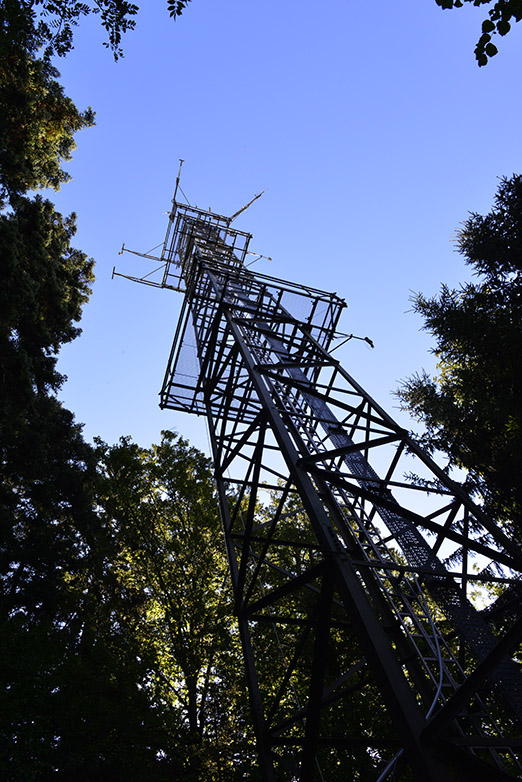
At the forest stand of the Lägeren, gas exchange measurements at the ecosystem level have been taken for more than 10 years. Sensors mounted on a tower built for a national observation network have been measuring CO2 concentrations and wind direction and speed above the leaf canopy. Based on this data, the CO2 uptake and release of the forest is being computed continuously. “These calculations, however, must be interpreted carefully,” explains Bachofen. Just recently, an ETH doctoral student demonstrated how the layers of air above and below the canopy do not always mix well. With full foliation, the tower measurements do not detect a considerable portion of the gas exchange with the atmosphere.
The postdoc’s main hope is that his project will quantify photosynthesis and evaporation on various levels within the canopy in order to better determine the water vapour and CO2 turnover of the trees and ultimately the entire forest.
To obtain accurate data, the researchers are studying two different tree species this year: beech and silver fir. They take two branch samples on four different levels and from two different orientations from three individuals per tree species. From each branch, the scientists analyse two leaves closely.
Tree climbers on fixed ropes
Three beech trees are on the schedule on this day in early August. By the end of the month, the trees will begin to degrade their chlorophyll and resorb the nutrients from the leaves – autumn and leaf fall are around the corner and then the beech leaves can no longer be examined. “Chlorophyll is currently at its peak,” says Bachofen.
This year he and his colleagues visited the sampling site to collect leaf material seven times in May, three times in July, and now in August – or rather to have it collected, as the tree-climbing is reserved to the two professional arborists Gysin and Erni. They make their way adeptly along the fixed ropes into the canopy of the trees, filming and photographing the spots where they cut the branches.
Drone tests
The sampling method works well in Bachofen’s opinion, but it has one major disadvantage: researchers are dependent on the help of the tree-climbers; thus, the sampling days have to be planned well in advance. In between, it is impossible to collect and analyse leaves, nor can the tree climbers reach all levels of the canopy– the outermost branches are out of reach even to the professionals.
The technical staff in Buchmann’s group is therefore experimenting with a drone designed to collect the outer and high-up branches that the climbers cannot reach. The drone is equipped with a gripper and small cutter. The scientists report that initial trials have been quite promising, but the method still needs to be refined before leaves can be collected systematically high in the canopy. The drone will not make the tree-climbers redundant, since it cannot cut the inner branches, which are accessible to the climbers.
A tree’s dilemma
The Leaf2Canopy project was started in 2016. Bachofen has the initial results from the first year, which confirm that photosynthesis is higher in the uppermost leaves of beech trees than the lower two levels, which exhibit noticeably lower levels during the same period. However, the lower leaves of beech trees can use light more efficiently. They attain their maximum rate of photosynthesis at light levels where sun leaves are still ramping up with it.
Photosynthesis depends, among other factors, on how much chlorophyll is built-up in the leaves, and to produce chlorophyll the tree requires nitrogen. This creates a dilemma for the tree: it can exploit the good light conditions in the upper canopy layers and invest the most nitrogen there. But photosynthesis also requires water, which must be transported from the roots to the top of the canopy. On hot and dry days, the water supply to the upper layers might be insufficient for photosynthesis, and the investment of nitrogen would be disadvantageous.
How do trees distribute nitrogen?
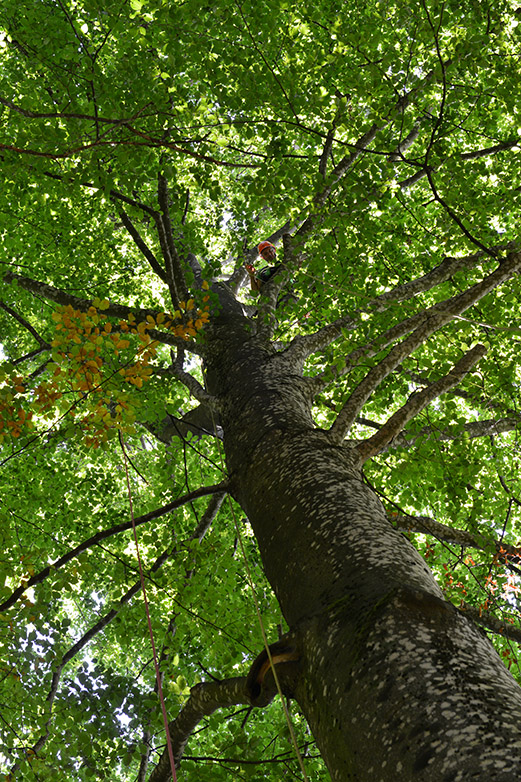
The distribution of nitrogen in trees is a key factor in the models used to calculate gas exchange in the forest. This distribution is still unclear for the trees on the Lägeren. This year, Bachofen is examining more closely how light and water availability affect photosynthesis and the distribution of nitrogen in the tree crown.
So far, he has shown that more chlorophyll per leaf surface area is found in the upper leaves, thus promoting higher rates of photosynthesis. However, the upper leaves of beech trees are much thicker than the lower ones, raising the question of whether the top leaves also have more nitrogen and chlorophyll in relation to leaf mass than the lower leaves, and whether the proportions change similarly depending on the height level.
Bachofen has concluded that the leaves on all layers contain similar levels of nitrogen per unit of leaf mass. In the upper leaves, however, the chlorophyll concentration in relation to the amount of nitrogen is less than in the lower leaves. “My interpretation is that in the upper leaves the tree invests more nitrogen in other structures instead of chlorophyll,” he says. But which ones he is not yet able to say.
“The tree has to invest nitrogen where it is most useful. This creates constantly conflicting goals,” explains the environmental scientist. For this reason, he says, it depends highly on the survival strategy of the tree species where in the crown the tree makes this investment.
Long days in the forest
After a while, Merz puts down her reading. The photosynthesis measurements are very time consuming, taking at least 20 minutes per leaf – time she uses to read. The walkie-talkie crackles as the tree climbers make contact with her. They exchange just a few words and then Merz gets up and disappears around the bend. Barely two minutes later, she is back with the next beech branch and repeats the measurement procedure – a sort of assembly line task for the young researcher.
When the leaves are clamped in the photosynthesis measuring instrument, once again the drill is to wait 45 minutes until picking up the next leaves from the tree-climbers. “Our days in the forest can get rather long,” says Bachofen. “At the end of the day, after we’ve cleaned and put away most of the equipment, we still have to wait until the last measurements are finished.”
Summer series
Finally holiday time: ETH News will present a special summer series during the break, with a new focus periodically.
Previous instalments:
18.07. "Don't rely on your holidays to make you happy"
21.07. “Asphalt has a major downside”
Forest research at the Scientifica 2017
Has this article sparked your interest? At Scientifica, you can find out more about the external page work of Prof. Nina Buchmann's group.
Meet other scientists and ask them questions on:
- Friday, 1 September 2017, 6 p.m. – 9 p.m. (Vernissage)
- Saturday, 2 September 2017, 1 p.m. – 7 p.m.
- Sunday, 3 September 2017, 11 a.m. – 5 p.m.
external page www.scientifica.ch (in German only)

